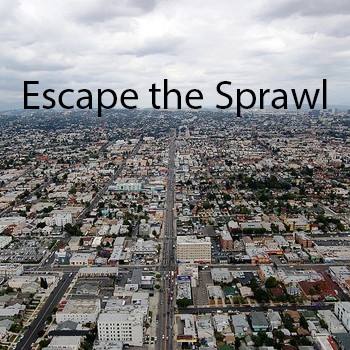By Jennifer Ortado, Marketing Manager

Bend has always been on our radar as a final destination. My sister-in-law has lived here for over 20 years and every visit to the area prompted new idealized scenarios for how we could eventually get up here for good. I have since learned we were not the only family to have such a plan.
I recall a Bend Chamber Pub Talk from early last year that had panel members present their top three priorities for Bend over the next three years. The moderator asked the audience of about 100 people how many were born and bred in Bend. Only three people raised their hands.
Like it or not, it’s a fact that the lifestyle and active community in Bend continues to draw a growing population of California in-migrants as well as from other metro areas, all carrying with them similar aspirations of escaping the urban landscape.
Bend’s planning and infrastructure is repeatedly called out by visiting friends as being “so well thought out”, and I have to agree. It’s no wonder proposed changes and expansion plans have people in a tizzy.
Whether you’re a nature preservationist in opposition to expansion or a large scale business owner in favor of growth promising a more diverse labor force, Bend’s expansion, the UGB and OSU-Cascades’ four-year university continue to prevail as hotly debated topics this year. The opinions included on both sides of the coin are strong, and I appreciate that the City has taken care to include all voices in its advisory committees.
As someone who moved here to escape from an urban environment, I’m quite interested in the discussion and the City’s process of evaluating the various growth scenarios.
Oregon’s land use law, designed to help preserve open spaces, promotes a “smart-growth” approach that involves developing infill land within the UGB before creating sprawl. The remand of the originally submitted UGB advised the City to make better use of these principles by developing existing lands within the boundary before seeking to expand. (When I Googled “Smart Growth vs. Sprawl”, I stumbled upon this National Geographic website that illustrates a virtual suburb incorporating the principles of “New Urbanism”. It reminded me of the diagrams presented in the city’s survey schematics).
With an anticipated population growth from 90,000 to approximately 115,000 by the year 2028, a major goal outlined by the Bend City Council for 2015 – 2017 includes “managing growth and focusing on uses that create a more urban form while recognizing Bend’s unique sense of place.
The revised UGB’s three growth scenarios up for review set out to address where all of these people will live and work, among other growing pains. Affordable housing developments cannot come soon enough, as Bend’s rental vacancy stands at less than 1% just as OSU-Cascades broke ground on the development of its four-year university.
Infill development at present is picking up near downtown, but the product coming online does not address affordable housing issues. (You may have noticed construction starts at Saginaw Sunset a 20-lot development off Saginaw at NW College Way offering custom homes in the mid-$700s and Base Camp developed by Portland based firm, Project^, marketing 25 townhomes near Colorado and Arizona Avenues starting at $650,000).
If approved, the revamped UGB proposal would allow for the construction of more than 16,000 new housing units, including more apartments over the next 20 years. The way prices have headed, I question how the growing population will be able to afford the housing slated for future development.
Another concern stemming from the UGB is from the owners of property included in the three proposed scenarios. These folks will see their investments affected by the newly imposed zoning. For example, an investor’s long-term plans for a housing development on land outside the city limits could be derailed if faced with newly imposed employment zoning after their property is included in the UGB.
Developing or redeveloping existing land on Bend’s Central Westside is a large part of the plan and the City has invited community feedback through an online survey that will run until August 7. Input from the survey will shape a preferred land use plan and will help form the transportation strategy for the area.
No matter your position, it is a critical time for Bend and decisions made today will have profound impact on the landscape and livability of Bend’s existing and future neighborhoods.
*Look to Bend’s Central Area (downtown roughly bounded by Third Street on the east, around the train tracks on the west, Revere on the north, and the railway underpass south of Franklin on the south) as a sample of this urban approach to redevelopment (checkout www.bendmakersdistrict.com).